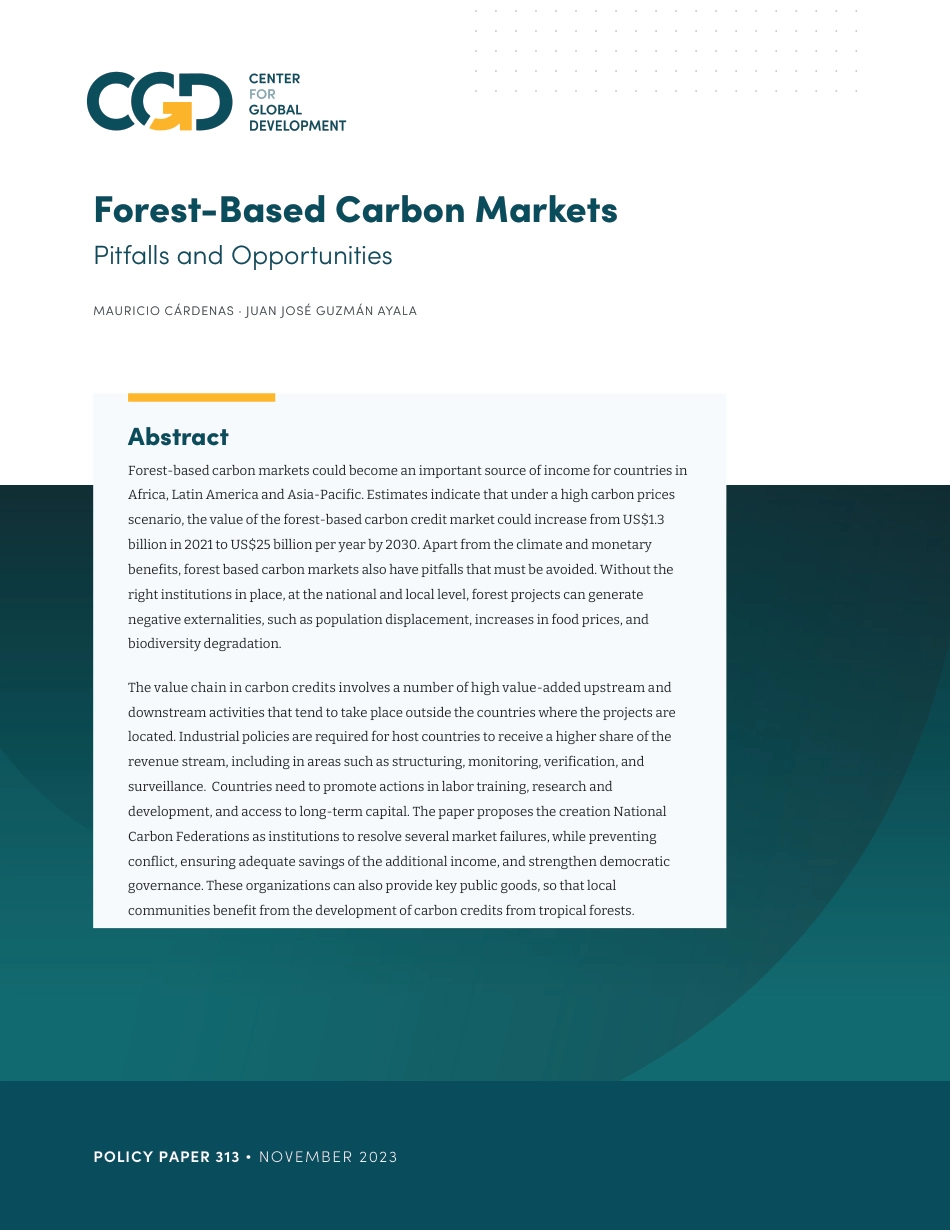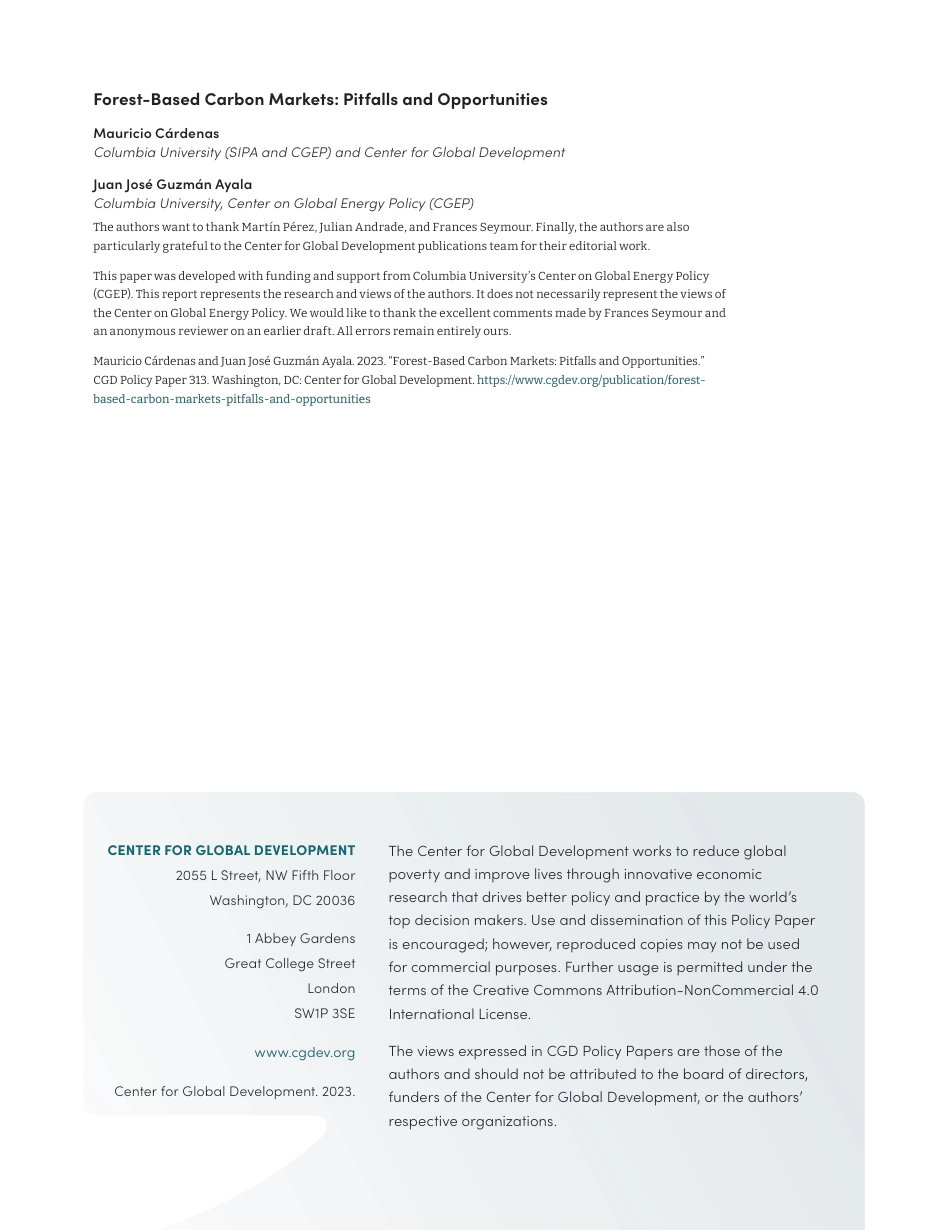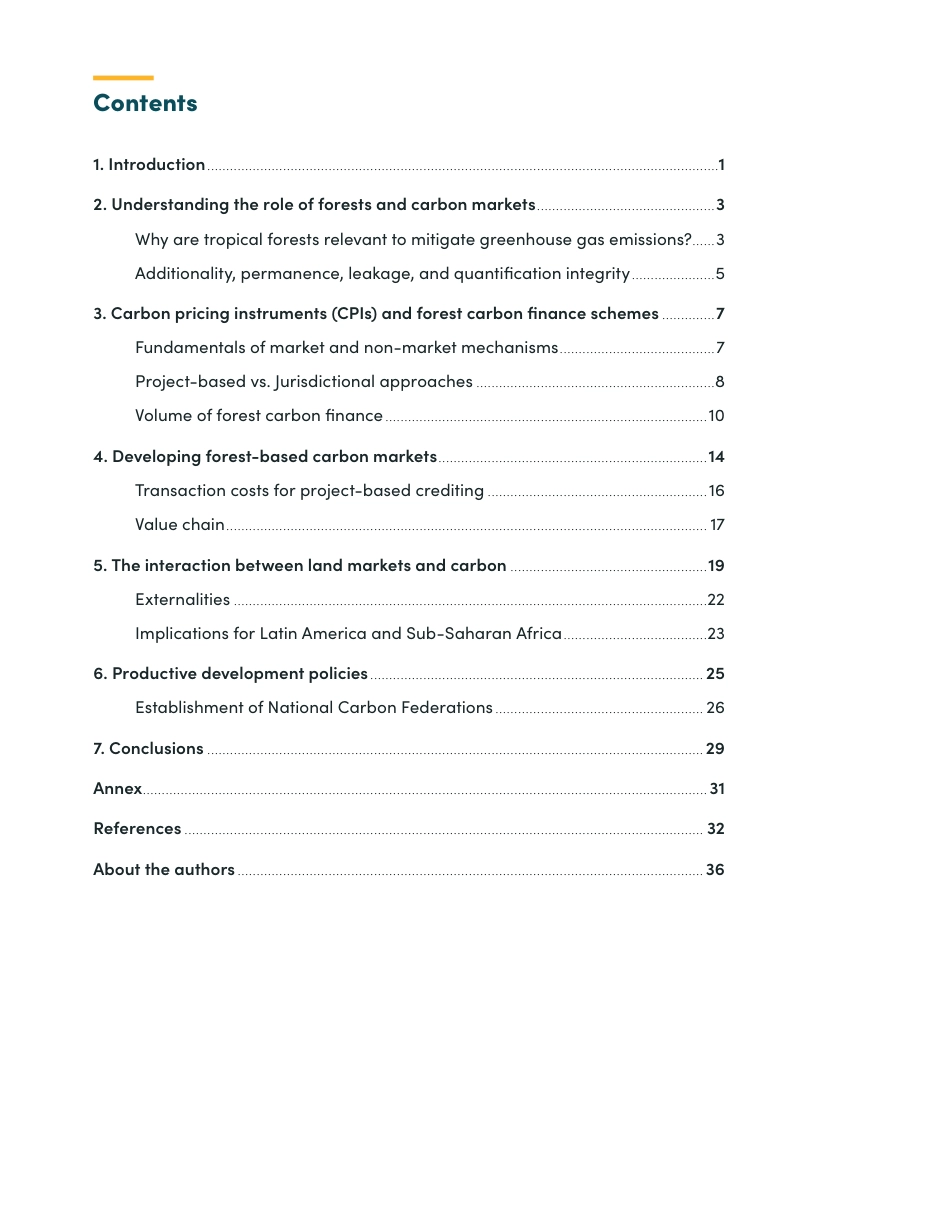AbstractForest-based carbon markets could become an important source of income for countries in Africa, Latin America and Asia-Pacific. Estimates indicate that under a high carbon prices scenario, the value of the forest-based carbon credit market could increase from US$1.3 billion in 2021 to US$25 billion per year by 2030. Apart from the climate and monetary benefits, forest based carbon markets also have pitfalls that must be avoided. Without the right institutions in place, at the national and local level, forest projects can generate negative externalities, such as population displacement, increases in food prices, and biodiversity degradation.The value chain in carbon credits involves a number of high value-added upstream and downstream activities that tend to take place outside the countries where the projects are located. Industrial policies are required for host countries to receive a higher share of the revenue stream, including in areas such as structuring, monitoring, verification, and surveillance. Countries need to promote actions in labor training, research and development, and access to long-term capital. The paper proposes the creation National Carbon Federations as institutions to resolve several market failures, while preventing conflict, ensuring adequate savings of the additional income, and strengthen democratic governance. These organizations can also provide key public goods, so that local communities benefit from the development of carbon credits from tropical forests.Forest-Based Carbon MarketsPitfalls and OpportunitiesMAURICIO CÁRDENAS · JUAN JOSÉ GUZMÁN AYALAPOLICY PAPER 313 • NOVEMBER 2023The Center for Global Development works to reduce global poverty and improve lives through innovative ...



